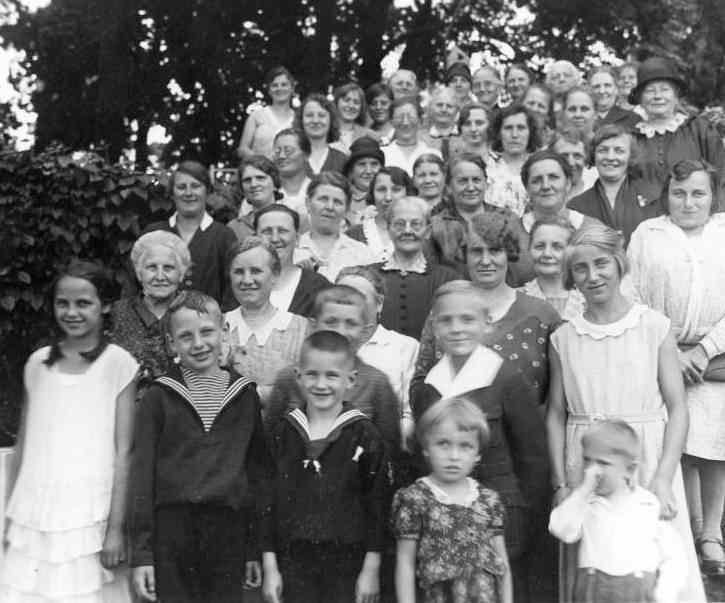
Figure 1.--Here we see what looks like an extended German family group, probably in the early 1930s. Note that one boy wear a dickey with his sailor suit and the other boy does not. Notice the boy in the next row with as very large Schiller collar. |

|
Middy blouses commonly came with dickies. These were attachments worn to cover up the area between the front "V" collar. The dickies varied, both the design and how they were attached to the collar. We wee dickies that were stripped, plain, and with embroidered designs. Most sailor suits came with detachable dickies. Some dickies buttoned on to the middy blouse. Others had tie on attachments. Some had both. Generally speaking the dickies were worn when the weather was cool, but taken off in warm weather. They were more likekly to be worn on special occassions, even during the summer. Here conventions varied from family to family. Thus we photogrhs that show boys both wearing and not wearing the dickies with their sailor suits.
In most photographs we only see what shows between the "V"-collars. Many dickies obly consisted of that small "V" shape which buttoned on to the middy blouse. Other dickies were in fact "T"-shirt type garments. There were other types of dickies. Some were rather like vests. Of course it is hard to tell from the photographic record just what type of dickie was involved.
Most sailor suits came with detachable dickies. I am not sure, but I think that virtually all middy blouses before World War II had detachable dickies. There were various ways in which the dickies were attached to the collar.Some dickies buttoned on to the middy blouse. Others had tie on attachments. Some had both.
Middy blouses commonly came with dickies. These were attachments worn to cover up the area between the front "V" collar. Generally speaking the dickies were worn when the weather was cool, but taken off in warm weather. They were more likekly to be worn on special occassions, even during the summer. Here conventions varied from family to family. Thus we note photographs that show boys both wearing and not wearing the dickies with their sailor suits, not uncommonly in the same group photographs. Some mothers may have made this decession. In other families it may have been left up to the boy.
The dickies varied greatly in design and We see dickies that were stripped, plain, and with embroidered designs. The stripes varied in width and color, but were always horizontal. The designs were even more varied. Most common were understandable nautical motifs, but the designs were not limited not limited to nautical motifs. We see quite a range of motifs, some of whivh we can not make out. Others we do not fully understand. The embroidered designs seen quite popular before World War I, after the War the stripes become increasingly popular.
Navigate the Boys' Historical Clothing Sailor Suit Country Related Pages:
[Return to the Main German middy blouse page]
[Return to the Main German sailor garment page]
[Return to the Main German sailor suit pages]
[American]
[Denmark]
[English]
[French]
[Italian]
Other Related Pages:
[Sailor suits]
[Kilts]
[Smocks]
[Pinafores]
[Sailor Hats]
[Blouses]
[Ring Bearers]
[Long hair]
[Ringlet curls]
[Hair bows]
[Bangs]
[Collars]
[Bows]
Navigate the Boys' Historical Clothing Web Site:
[Return to clothing styles]
[Introduction]
[Activities]
[Biographies]
[Chronology]
[Cloth and textiles]
[Clothing styles]
[Countries]
[Topics]
[Bibliographies]
[Contributions]
[FAQs]
[Glossaries]
[Satellite sites]
[Tools]
[Boys' Clothing Home]
Navigate the Historic Boys' Clothing Web German pages:
[Main German country page]
[German art]
[German catalogs]
[German choirs]
[German lederhosen]
[German movies]
[German royal family]
[German schoolwear]
[German youth groups]
